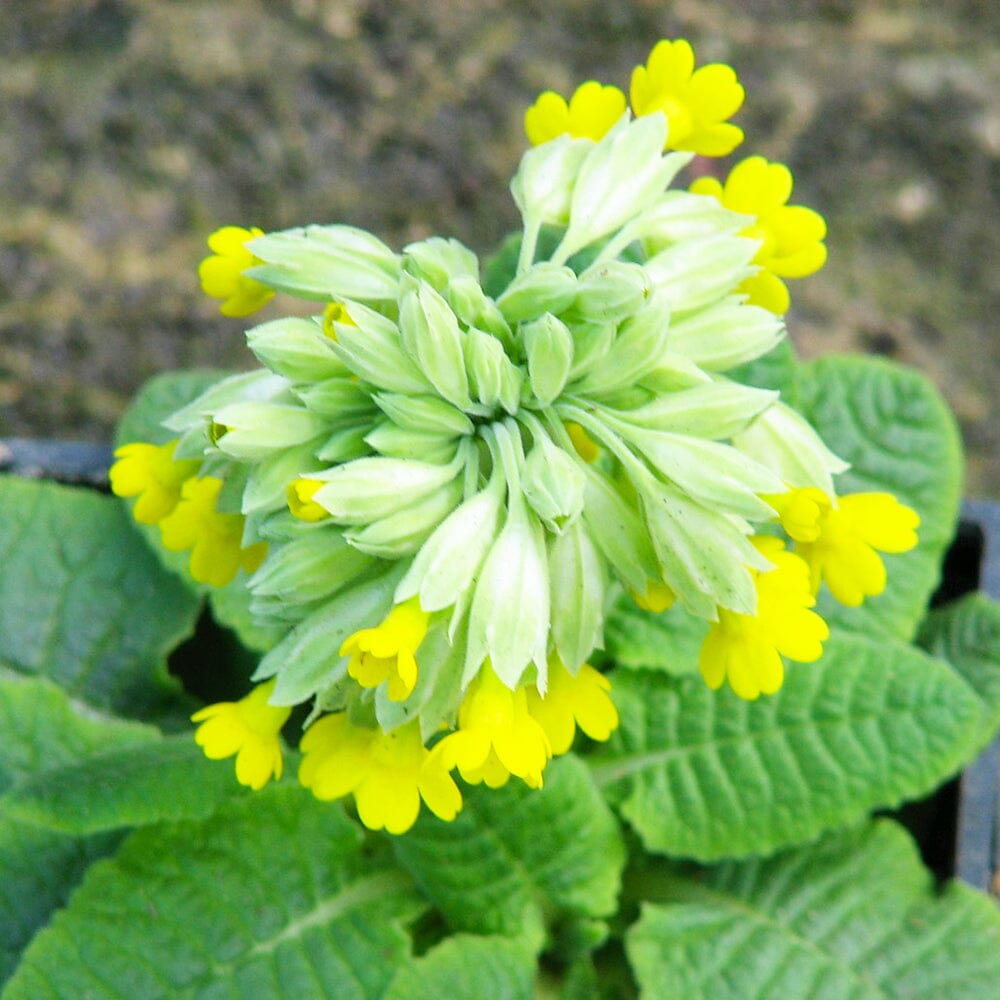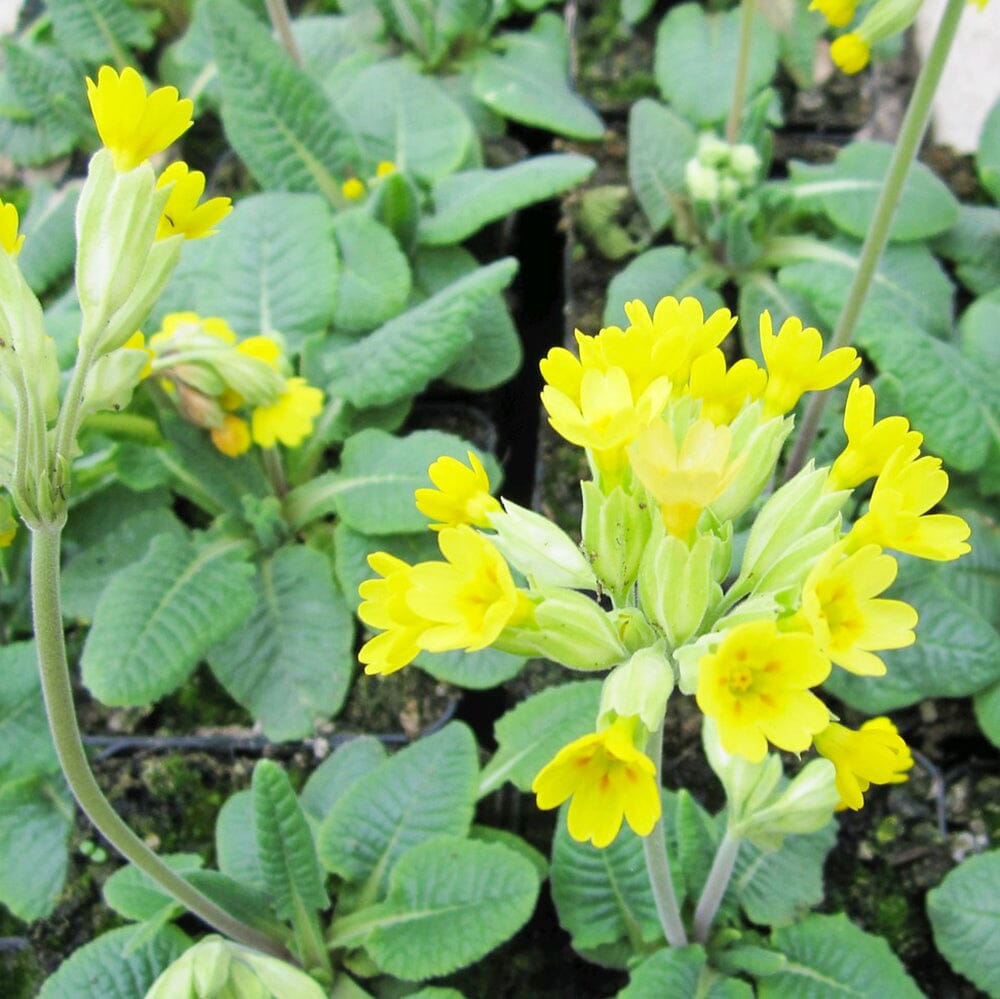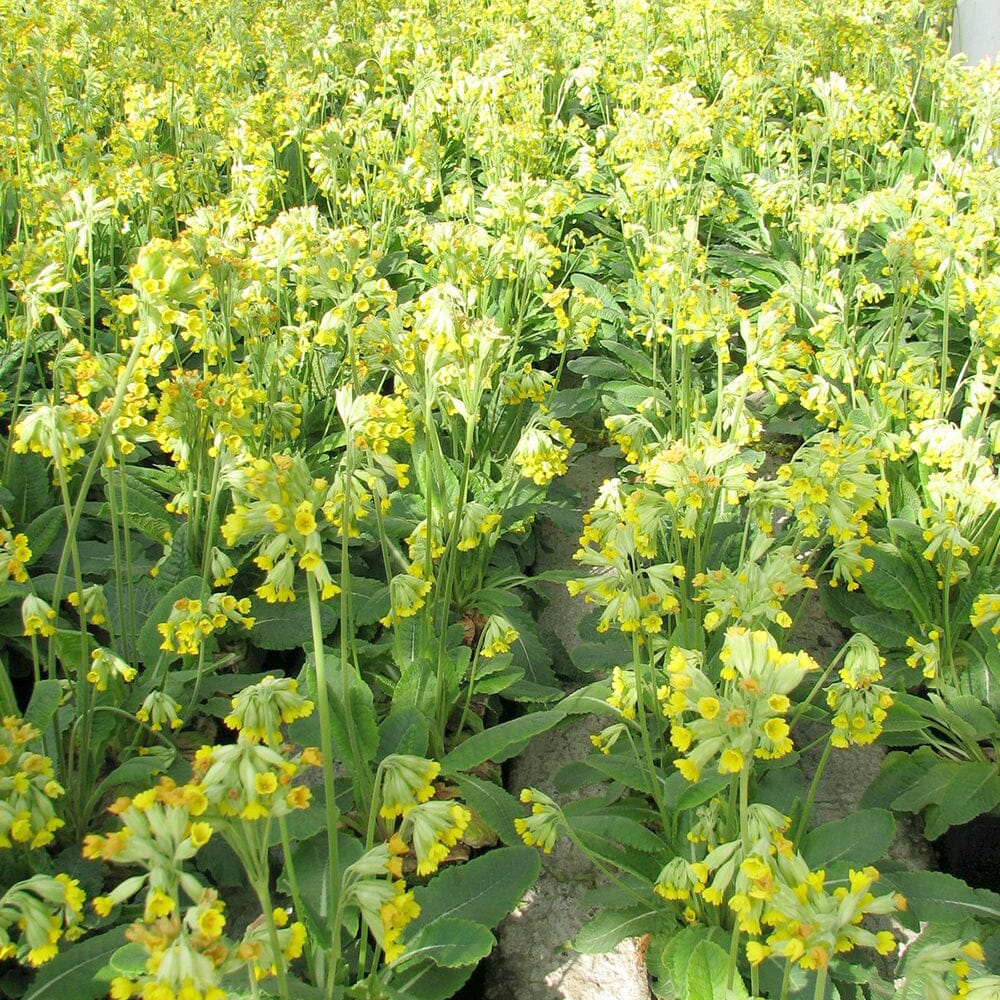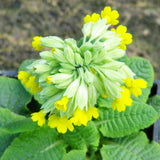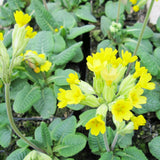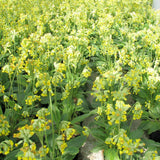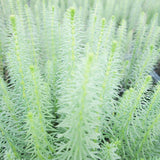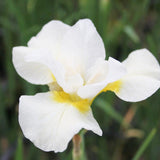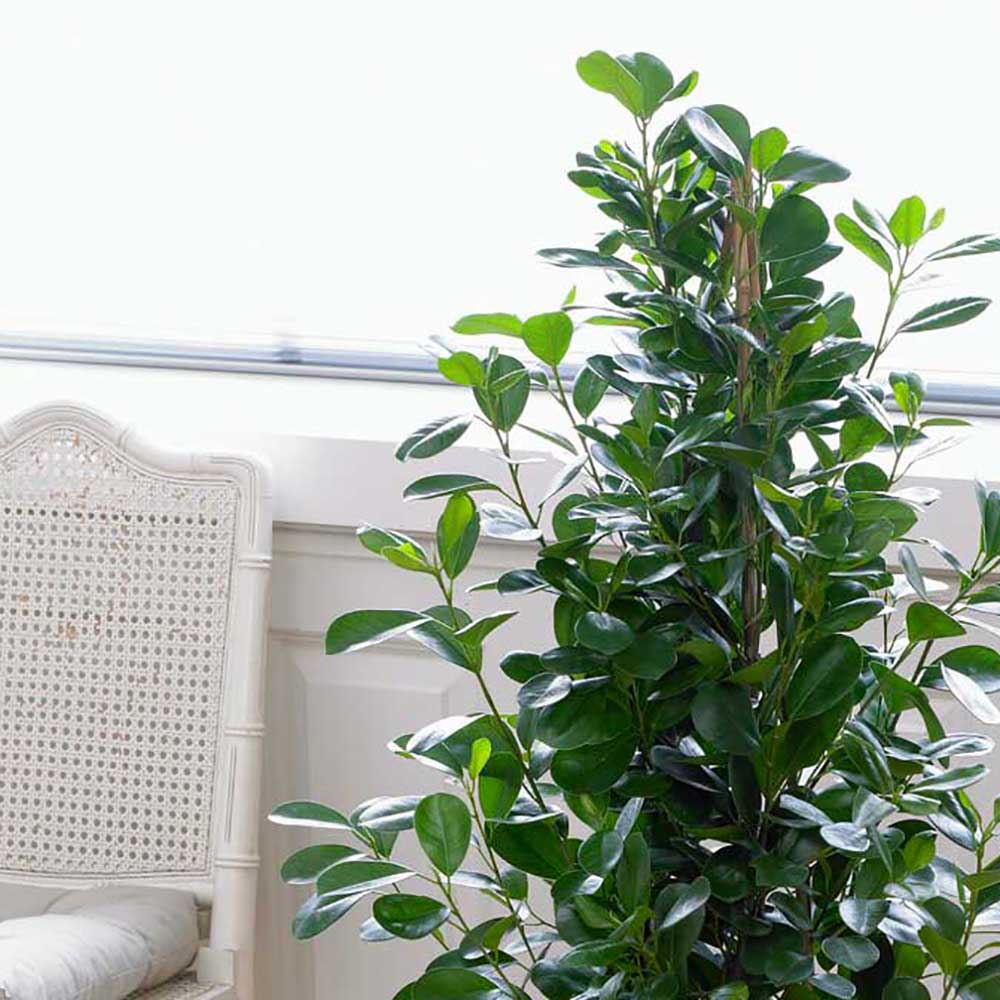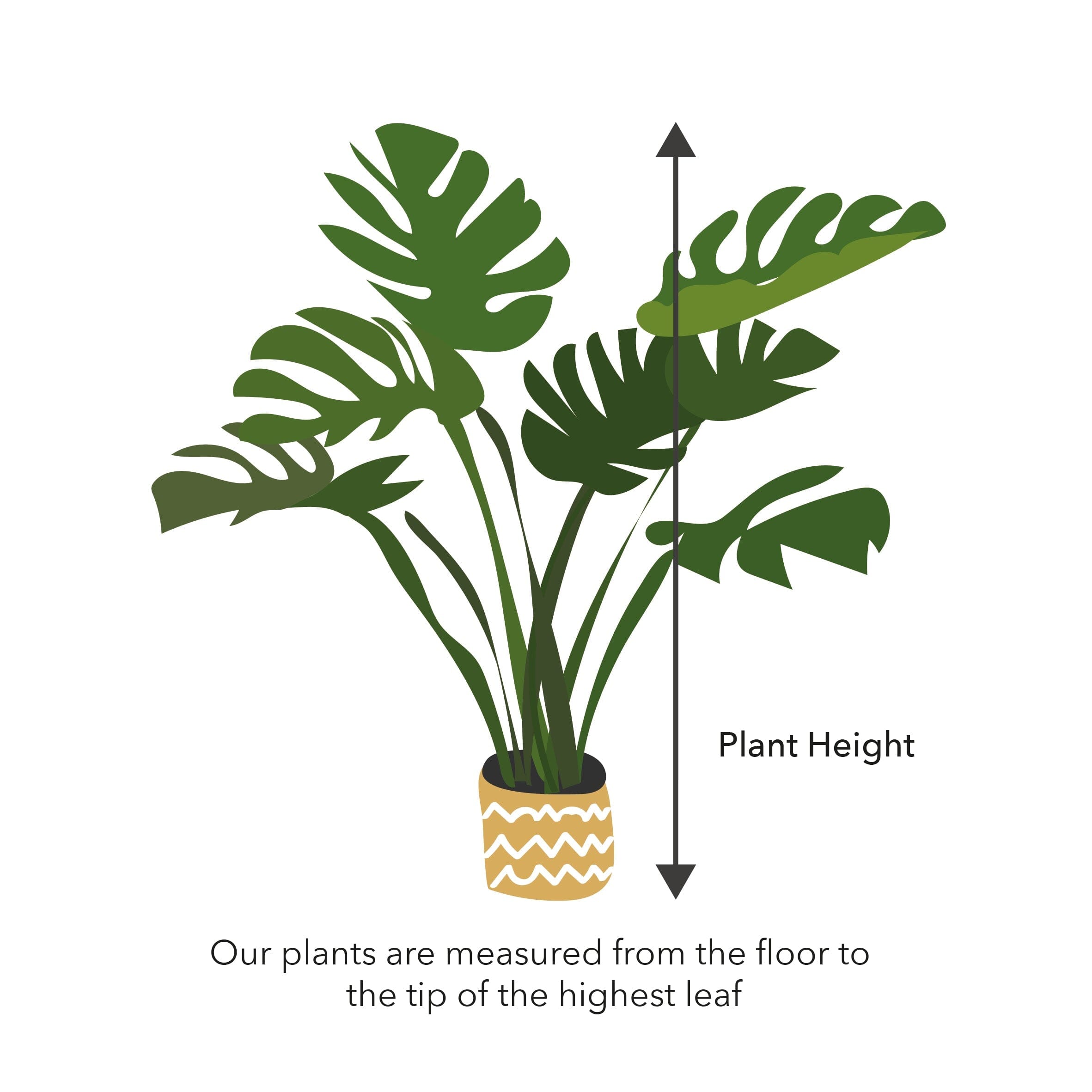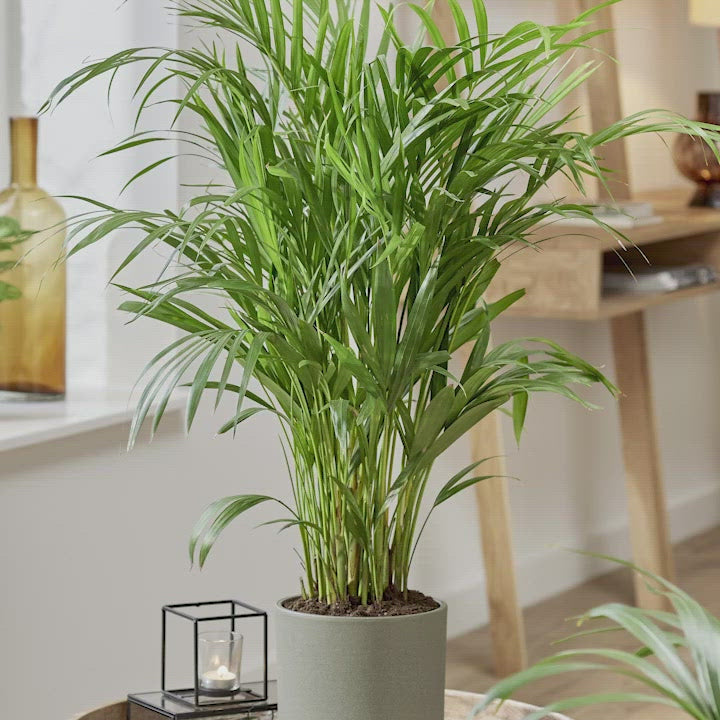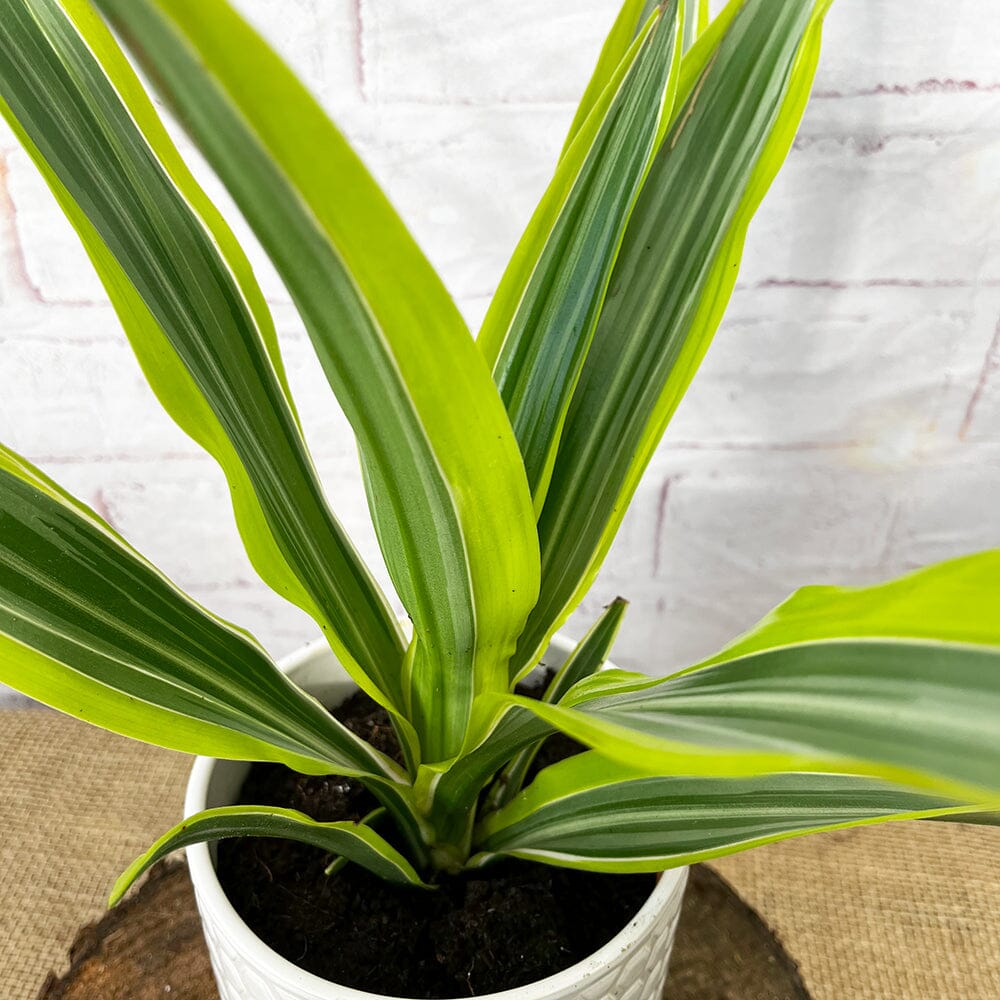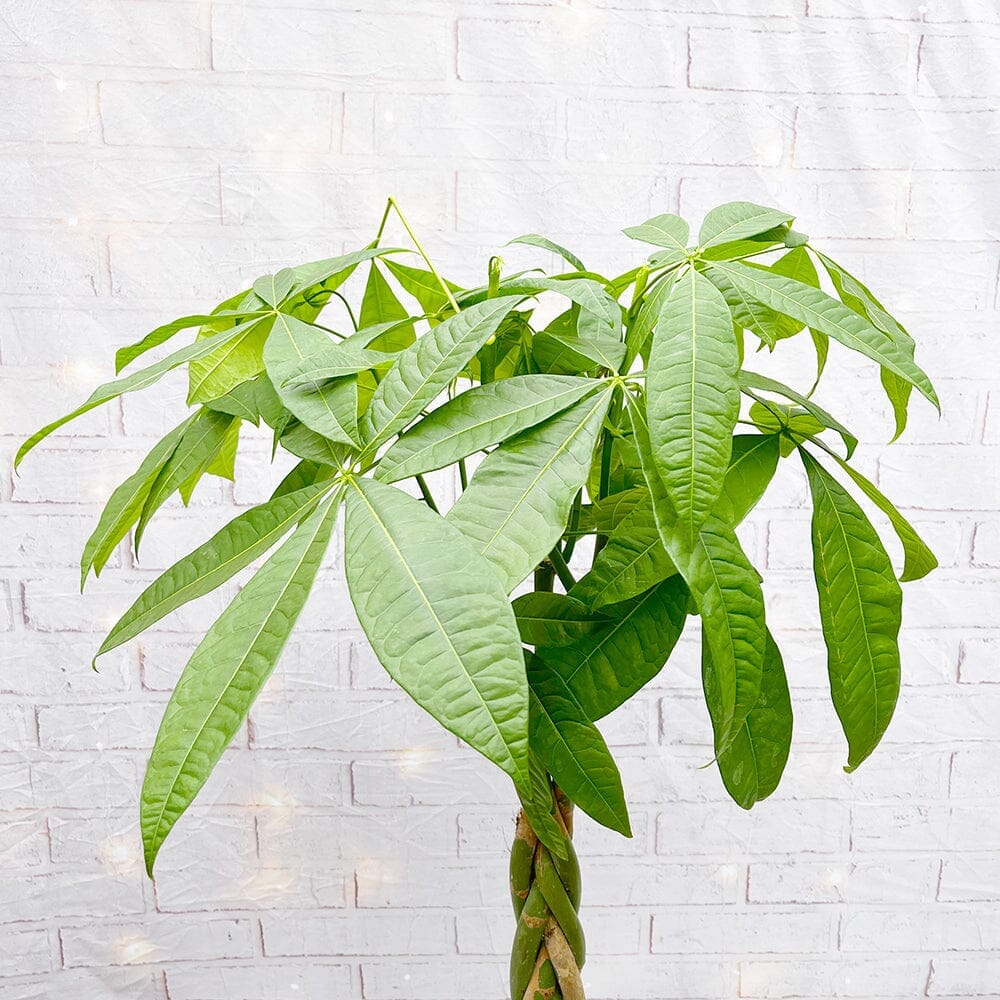Primula Veris Aquatic Pond Plant - Cowslip
Primula veris, commonly known as Cowslip or English Primrose, is a charming perennial herb that produces clusters of cheerful, bell-shaped flowers. Here is a detailed description and care guide for Primula veris:
Description:
Primula veris forms a low-growing rosette of wrinkled, lance-shaped leaves that are light to medium green in colour. The leaves grow directly from the base of the plant and have toothed or lobed edges. From early to mid-spring, it sends up sturdy, leafless stems that bear clusters of fragrant, pendulous flowers. The flowers have a distinct bell shape, with bright yellow petals and a contrasting orange or red center. The blossoms are held above the foliage, creating a delightful display of colour and fragrance. Primula veris is known for its early bloom time, often appearing as one of the first flowers in the garden after winter.
Care Guide:
Light: Primula veris thrives in partial shade to full sun, but it prefers a location with filtered sunlight or dappled shade. It can tolerate full sun in cooler climates but may require some shade in hot summer regions.
Soil: Provide a well-draining soil that is rich in organic matter. Primula veris prefers a slightly acidic to neutral pH. Amending the soil with compost or well-rotted manure before planting can help improve its fertility and moisture retention.
Watering: Keep the soil consistently moist, but avoid waterlogging. Primula veris appreciates regular watering, especially during dry periods. Water at the base of the plant to prevent wetting the foliage, which can lead to disease issues.
Fertilizer: Primula veris doesn't typically require much fertilizer. However, you can apply a balanced, water-soluble fertilizer in early spring to promote healthy growth and flowering. Follow the package instructions for the recommended dosage and frequency.
Division: Every few years, when the clumps become crowded, you can divide Primula veris in early spring or after flowering. Carefully dig up the plant, separate the individual rosettes, and replant them in well-prepared soil. This helps maintain the vigor and health of the plant.
Pests and Diseases: Primula veris is generally resistant to pests and diseases. However, it may be susceptible to slugs or snails, especially when grown in damp conditions. Monitor the plant and take appropriate measures if necessary.
Winter Care: Primula veris is hardy in USDA hardiness zones 3 to 8. It can withstand cold temperatures and even a light frost. Provide a layer of mulch around the plant to protect the roots during winter.
Primula veris is a delightful perennial that adds early colour and fragrance to the garden. Its cheerful flowers and attractive foliage make it a popular choice for borders, rock gardens, and woodland settings. With the right growing conditions and regular care, you can enjoy the beauty of Primula veris year after year.
Selection:
Choose plants that are specifically adapted to grow in wet or boggy conditions. Research different species of bog plants to find ones that suit your pond's conditions and your aesthetic preferences. Consider factors such as height, flower colour, foliage texture, and seasonal interest when selecting plants.
Soil:
Bog plants thrive in soil that is consistently moist, but not waterlogged. Prepare the planting area by creating a mix of equal parts garden soil, peat moss, and sand to provide good drainage while retaining moisture. Avoid using heavy clay soil, as it can become compacted and restrict root growth.
Sunlight:
Most bog plants prefer full sun to partial shade. Ensure that the plants receive at least 4-6 hours of direct sunlight each day for optimal growth and flowering. Some bog plants can tolerate more shade, so consider the specific light requirements of the plants you choose.
Watering:
Bog plants require consistent moisture, so water them regularly to keep the soil damp. Monitor the moisture level and water as needed to prevent the soil from drying out. During hot and dry periods, you may need to water more frequently to maintain proper moisture levels.
Planting:
Dig a hole slightly larger than the root ball of the plant and loosen the soil at the bottom. Place the plant in the hole, ensuring that the crown is level with or slightly above the soil surface. Backfill the hole with the prepared soil mixture, gently firming it around the plant to eliminate air pockets. Water thoroughly after planting to settle the soil and provide initial hydration.
Mulching:
Apply a layer of organic mulch, such as straw or shredded bark, around the base of the plants. Mulching helps retain moisture, suppresses weeds, and regulates soil temperature. Maintain a layer of 2-3 inches of mulch, keeping it away from the plant's stems to prevent rotting.
Fertilization:
Bog plants generally do not require heavy fertilization if the soil is nutrient-rich. However, if growth appears weak or leaves show signs of nutrient deficiencies, you can apply a slow-release fertilizer specifically formulated for aquatic plants. Follow the manufacturer's instructions for application rates and frequency.
Maintenance:
Regularly remove any dead or decaying foliage to maintain plant health and appearance. Divide overcrowded plants every few years to prevent competition for resources and promote vigorous growth. Prune back excessive growth to maintain a tidy appearance and to prevent plants from encroaching on other plants or the pond itself.
Winter Care:
Hardy bog plants can withstand winter temperatures, while tender ones may need protection. In colder regions, consider mulching around the base of the plants or covering them with a layer of straw or burlap to insulate them from freezing temperatures.
Monitoring and Troubleshooting:
Regularly inspect plants for signs of pests, diseases, or nutrient deficiencies. Address any issues promptly with appropriate treatments, such as organic insecticides, fungicides, or nutrient amendments. By following these general tips and care guidelines, you can create a thriving bog planting area around your pond, adding beauty and interest while supporting a diverse ecosystem.








